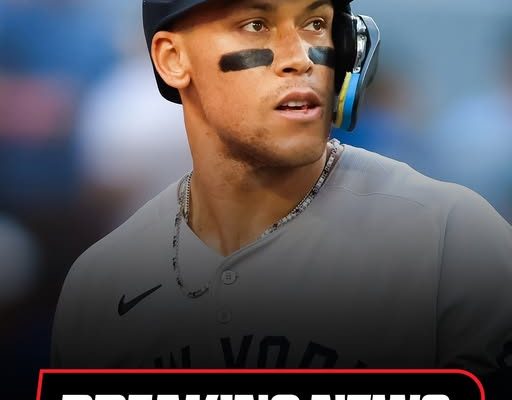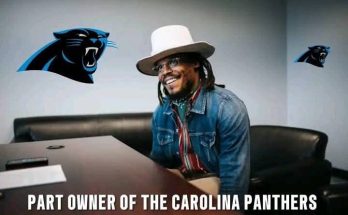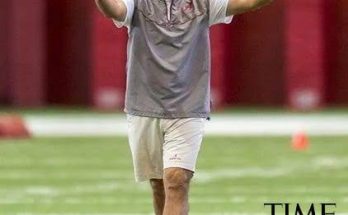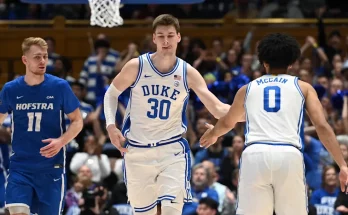The New York Yankees have been dealt a significant blow in their push for postseason dominance as superstar slugger Aaron Judge is officially headed to the injured list with a flexor strain in his right arm. The news sent a ripple of concern through the fanbase, front office, and dugout alike, though a collective sigh of relief followed soon after—it was confirmed that Judge’s ulnar collateral ligament (UCL) remains intact, sparing him from a much more severe and season-ending Tommy John surgery. Still, the absence of the Yankees’ captain is a harsh setback for a team that has leaned heavily on his leadership and explosive offensive production throughout the season.
For weeks now, Aaron Judge had been dealing with minor discomfort in his right forearm and elbow area, but being the fierce competitor that he is, he played through it, masking any significant signs of distress. However, in the past few games, observers noted some subtle changes in his swing mechanics and his arm motion in the outfield—hints that something may be amiss. Following a routine throw to the plate during a recent game at Yankee Stadium, Judge grimaced, prompting the Yankees’ medical staff to step in for a closer evaluation. An MRI confirmed the diagnosis: a flexor strain, an injury commonly associated with overuse and high-stress throwing or hitting mechanics.
The moment the injury was announced, the baseball world held its breath—not just because of Judge’s iconic presence in the game, but because the term “flexor strain” often carries a dark undercurrent of potential UCL damage. For pitchers, a flexor strain is notoriously ominous. For position players like Judge, it’s still serious, but the fact that his UCL is intact allows for a more optimistic timeline and treatment plan. The Yankees confirmed that Judge would undergo rest and rehabilitation, aiming for a return later in the regular season. He will not need surgery, at least not at this time, which keeps hopes alive for a late-season surge with their best player back in the lineup.
This season, Judge has been one of the most consistent and dominant forces in the Yankees’ arsenal. As of the time of the injury, he was batting .291 with 28 home runs, 72 RBIs, and a league-leading OPS of .993. His ability to change the course of a game with one swing or a leaping catch at the wall has made him a perennial MVP candidate and the undisputed face of the franchise. His leadership in the clubhouse is just as vital. Younger players, veterans, and coaches alike rally around his presence and example. Taking him out of the mix, even temporarily, is akin to removing the keystone from an arch—it threatens the balance and structure of everything surrounding it.
From a team perspective, this injury couldn’t have come at a worse time. The Yankees are in the thick of a competitive American League East race, battling the Baltimore Orioles and the Tampa Bay Rays for divisional supremacy. Every game counts, and Judge’s bat is not one that can be easily replaced. While the team has solid depth with players like Juan Soto, Giancarlo Stanton, and Anthony Rizzo, the reality is that none of them offer quite the same two-way dominance Judge brings to the diamond. His defense in right field, base running instincts, and clutch hitting will be sorely missed.
The Yankees’ front office now faces several pressing decisions. Manager Aaron Boone will need to shuffle the lineup and make tactical adjustments to compensate for Judge’s absence. This could mean more playing time for Trent Grisham or Oswaldo Cabrera, with potential call-ups from Triple-A Scranton to provide reinforcement. Offensively, the Yankees may need to alter their approach, focusing more on manufacturing runs through speed and small ball rather than relying on the long ball that Judge so often delivers.
Beyond the field, Judge’s injury raises questions about workload management, long-term durability, and the immense physical toll placed on modern players—especially those who bring the level of intensity Judge does day in and day out. At 6’7″, 282 pounds, he is a marvel of athleticism, but his size also places additional strain on joints and tendons not built to endure repeated explosive movements. This isn’t the first time Judge has landed on the injured list in his career, and while this particular setback isn’t catastrophic, it adds another chapter to a growing list of physical challenges he’s had to overcome.
Fans, predictably, have taken to social media to voice both their support and their anxiety. Yankee Nation is fiercely loyal to Judge and understands the importance of not rushing him back too quickly. Many remember how he battled back from a toe injury just last season to lead the team in a late playoff push. Still, others express concern over whether Judge can stay healthy through the full grind of a 162-game season and a deep October run. That concern isn’t unfounded, but Judge has always proven doubters wrong when it matters most.
Judge himself addressed the media briefly, downplaying the severity of the injury but acknowledging the frustration of not being on the field to help his teammates. He emphasized his commitment to rehab, praised the medical team for catching the issue early, and made it clear that his goal is to return stronger and more prepared than ever. His words carried the same measured intensity that fans have come to know: calm, focused, and relentlessly positive even in adversity. It’s that mentality that has made him a fan favorite not just in New York, but across the baseball landscape.
From a league-wide perspective, Judge’s absence is a loss for Major League Baseball. He is one of the few superstars who transcends his own market, a player whose highlights make nightly national broadcasts, whose jersey is among the best-selling in all of sports, and whose character off the field enhances the integrity of the game. For fans around the country tuning in to see towering home runs and electrifying plays, not seeing number 99 in pinstripes will leave a void.
The Yankees medical team remains cautiously optimistic. Flexor strains, depending on severity, can heal with proper rest, anti-inflammatory treatments, and gradual return to throwing and hitting activities. The best-case scenario would have Judge back within four to six weeks, but any signs of lingering discomfort could push that timeline further. Given the stakes, both for the team and for Judge’s career longevity, caution will almost certainly take precedence over urgency. It’s a marathon, not a sprint—and the Yankees need him in October far more than they need him in August.
In the interim, all eyes will be on how the rest of the roster responds. Can Giancarlo Stanton rediscover his MVP form and carry the offensive load? Will Juan Soto elevate his game even further and assert himself as a leader? Can the pitching staff, anchored by Gerrit Cole and Carlos Rodón, tighten up to keep games close without the cushion Judge often provides with his bat? These questions will define the Yankees’ next month—and potentially their postseason fate.
The front office might also explore trade options ahead of the deadline. While Judge is expected to return before the end of the regular season, insurance moves aren’t out of the question. A versatile outfielder or an experienced bat off the bench could help offset the loss. Names like Brent Rooker from the A’s or Michael A. Taylor have already been floated in speculative circles, though no moves have been confirmed.
In the grand scheme, this moment tests the character and resilience of a Yankees team with championship aspirations. With Aaron Judge sidelined but not shelved for good, the mission becomes twofold: weather the storm in his absence and ensure that when he returns, the team is still in a position to strike. The Bronx has seen its share of legends overcome injury adversity—Derek Jeter, Mariano Rivera, and Don Mattingly among them—and Judge has consistently shown he belongs in that echelon.
This injury, while unfortunate, is not the end of the story. It is a chapter, one that could ultimately add to Judge’s legacy as a player who faced down setbacks and returned stronger each time. As the Yankees press forward without their captain, one thing remains certain: when Aaron Judge returns, he will bring with him the thunder, the focus, and the hunger that have defined his journey from rookie sensation to face of the franchise. Until then, the team—and the sport—will be waiting for his next swing of greatness.



